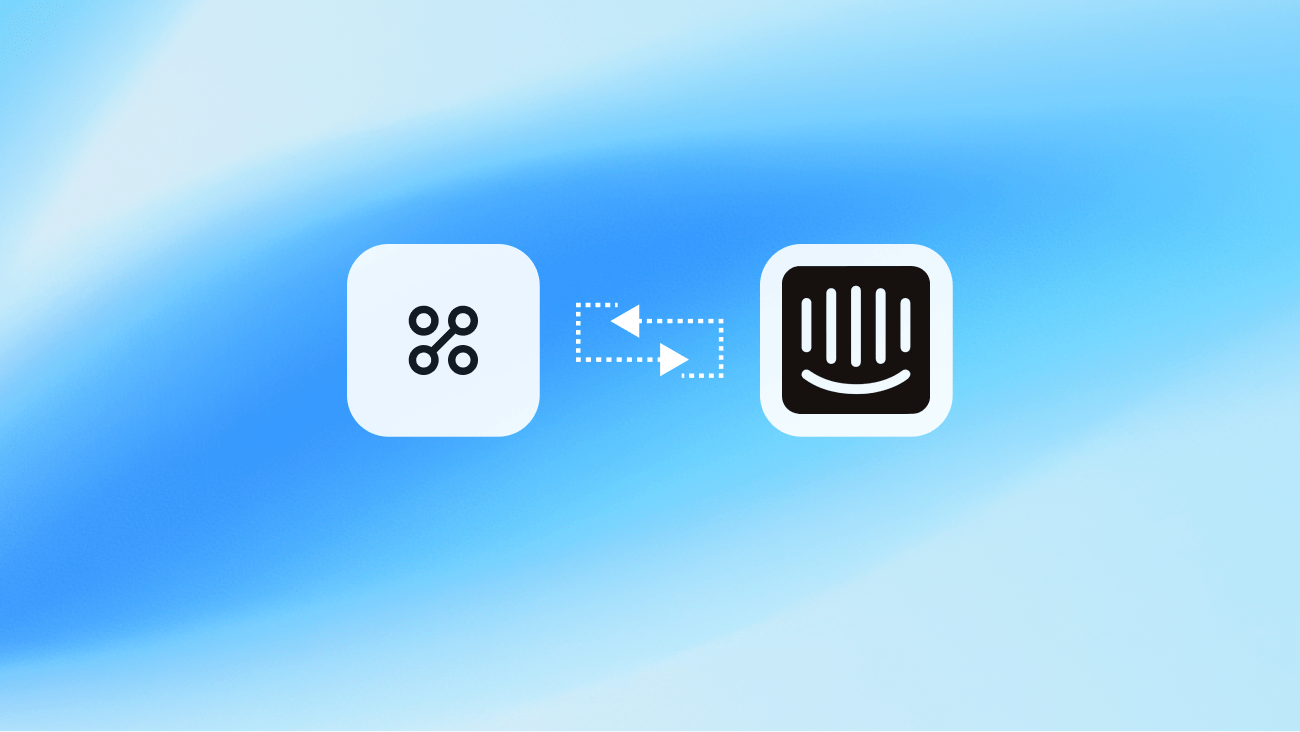A warm lead is a prospect who has already engaged with your brand (e.g., content downloads, pricing page visits, webinars). Compared with cold leads, they’re problem-aware and respond better to personalized, multi-touch outreach—making them faster and cheaper to convert.
| Lead Type | Problem Awareness | Typical Actions | Best Next Step |
|---|---|---|---|
| Cold Leads | Problem-unaware | No prior engagement | Educational nurture |
| Warm Leads | Solution-curious | Content downloads, social media engagement | Personalized outreach |
| Hot Leads | Solution-ready | Demo requests, pricing inquiries | Immediate sales conversation |
Your CRM is full of sales leads, but your sales funnel is empty. Sound familiar? The problem isn’t volume—it’s temperature. Most sales teams waste significant time chasing cold leads who will never buy, while the warm leads who actually convert slip through the cracks.
This isn’t just about missed quota. It’s about wasted marketing campaigns, frustrated sales reps, and marketing budgets under constant scrutiny. The solution? Stop chasing every lead and start focusing exclusively on qualified leads that matter.
This playbook provides a proven framework to transform your lead generation strategy, turning cold prospects into sales-ready opportunities. You’ll learn how to identify warm leads using behavioral signals, generate leads on demand with UpLead’s 160M+ contact database, and convert them into revenue with data-backed strategies that close 47% larger deals (Annuitas; via HubSpot).
What’s the Difference Between Cold Leads, Warm Leads, and Hot Sales Leads?
The difference between cold leads, warm leads, and hot sales leads lies in their level of engagement with your brand and readiness to buy your product or service. Understanding these sales lead types helps your sales team allocate resources more effectively throughout the sales process.
Cold leads are potential customers who have never expressed interest in your product or service and are usually put off by your marketing efforts to contact them. They typically take more time to convert through your sales funnel and require careful nurturing through targeted marketing efforts throughout the sales cycle.
Warm leads are prospects who have demonstrated interest in your brand or solution through specific engagement actions, such as downloading valuable content, subscribing to newsletters, or engaging with social media posts. Unlike cold sales leads who have never interacted with your business, warm leads have taken deliberate steps that signal potential buying intent.
Hot leads are highly interested prospects who are ready for immediate sales conversation and have shown strong purchase intent. These hot sales leads have typically requested demos, contacted your sales team directly, or engaged in conversations about implementation timelines and budget during their buyer journey.
Understanding lead temperature isn’t just marketing jargon—it’s the foundation of efficient sales strategy. When your marketing and sales teams can accurately categorize leads by their readiness to buy, you allocate resources where they’ll generate the highest conversion rates.
How Do Warm Leads Differ from MQLs and SQLs?
The difference between warm leads, Marketing Qualified Leads (MQLs), and Sales Qualified Leads (SQLs) lies in their progression through your marketing funnel and the level of qualification achieved by your marketing teams and sales professionals.
A warm lead is any individual who has shown initial interest through passive actions like subscribing to your newsletter, following your social media platforms, or downloading general valuable content. They’re aware of your brand but haven’t necessarily indicated serious buying intent.
An MQL is a warm lead that your marketing team has identified as more likely to become a customer based on deeper engagement. This includes attending webinars, downloading detailed whitepapers, or repeatedly visiting high-intent pages like your pricing page or product demos. MQLs have crossed a behavioral threshold that suggests genuine interest in your product or service.
An SQL is an MQL that your sales team has vetted and confirmed shows active purchase intent. These prospects who’ve typically requested demos, contacted sales directly, or engaged in conversations about implementation timelines represent the hottest sales leads in your sales process.
The key is establishing clear, agreed-upon criteria between marketing and sales teams for each transition. Without this alignment, qualified leads get lost in handoffs and opportunities slip through the cracks of your sales funnel.
Why Do Warm Leads Convert Better Than Cold Outreach?
Warm leads convert better because they’ve already progressed through the problem recognition stage of the buying process. They understand their pain points and have begun evaluating solutions, which eliminates the lengthy education phase required for cold prospects through your marketing channels.
The data supports this dramatically. While cold calling and cold outreach campaigns typically see response rates of 1-3%, warm lead follow-ups achieve much higher response rates. The reason is simple: warm leads want what you’re offering, but you need to prove you’re the right provider for their specific needs through your sales strategy.
Warm sequences consistently outperform cold outreach in both reply and meeting rates. Your mileage depends on offer quality, list quality, and timing, but the fundamental advantage remains: warm leads have already demonstrated interest in solving problems your product or service addresses.
What Are the Key Behavioral Signals That Identify Warm Leads?
Identifying warm leads requires monitoring specific behavioral signals that indicate genuine interest and buying intent from potential customers. The key is tracking engagement patterns across multiple marketing channels to build a complete picture of prospect readiness.
Warm Lead Signals (Checklist)
The most reliable warm lead indicators include these six behavioral patterns that help you capture warm leads effectively:
- Pricing page revisits: Multiple visits to pricing or plan comparison pages
- Case study dwell time: Spending significant time reading customer success stories
- Multi-link email clicks: Clicking multiple links in your email marketing campaigns
- Webinar attendance: Participating in educational webinars or product demos
- Repeat direct traffic: Returning to your website multiple times through direct visits
- Multi-stakeholder opens/forwards: Email forwards to colleagues or multiple opens from same company
Email engagement patterns also reveal interested prospects. Look for potential customers who consistently open emails, click multiple links, or forward marketing materials to colleagues. This behavior suggests they’re sharing your information internally and building consensus for a purchase decision.
Content consumption depth is another strong signal. Prospects who download multiple free resources, attend webinars, or engage with educational content are investing time to understand your solution. This educational behavior typically precedes buying decisions by 2-4 weeks in B2B sales cycles.
How Do You Build an Effective Lead Scoring Model?
A simple lead scoring model assigns point values based on prospect actions and characteristics to prioritize your sales team’s outreach efforts. Here’s a practical 100-point system that combines firmographic and behavioral data to help you convert warm leads effectively.
Lead Scoring Calculator (100-Point Model)
Firmographic Data (40 points maximum):
• Job Title: C-Level (+20 points), VP (+15 points), Director (+10 points), Manager (+5 points)
• Company Size matching your ideal customer (+15 points)
• Target Industry (+15 points)
Behavioral Data (45 points maximum):
• Email clicks (+3 points each)
• Content downloads: General (+5 points), Mid-funnel (+10 points), Bottom-funnel (+15 points)
• Webinar attendance (+15 points)
• Multiple page visits (+5 points)
• Social media engagement (+3 points each)
High-Intent Actions (50+ points):
• Pricing page visit (+15 points)
• Demo request (+50 points)
• Contact sales form (+50 points)
• Free trials signup (+40 points)
Routing Rules & Thresholds:
• Cold Lead: Under 30 points → Nurture only
• Warm Lead/MQL: 30-69 points → SDR cadence within 24 hours
• Hot Lead/SQL: 70+ points → AE contact within 5 minutes
How Does AI Help Generate Warm Leads?
AI revolutionizes warm lead generation through predictive analytics, hyper-personalization, and conversation intelligence that human sales teams can’t match at scale. These technologies help identify warm and hot leads more efficiently while improving conversion rates.
Predictive Lead Scoring uses machine learning to analyze vast datasets and identify patterns of existing customers who converted. AI can automatically rank potential leads by conversion likelihood, far exceeding manual scoring methods used by sales professionals.
AI-Driven Hyper-Personalization leverages generative AI to craft unique outreach by analyzing LinkedIn profiles, company news, and past interactions. This results in higher engagement rates compared to generic messaging, as AI can identify relevant talking points human sales reps might miss.
Conversation Intelligence platforms like Gong and Chorus record and analyze sales conversations to identify winning behaviors. They provide real-time coaching suggestions during calls and create searchable libraries of successful interactions, helping sales professionals replicate what works with warm leads.
How Can You Generate Warm Leads on Demand?
Generating warm leads on demand means using a combination of intent data, behavioral triggers, and valuable content to attract prospects who are already in-market for your solution. The following workflows show exactly how to execute this lead generation strategy using UpLead’s platform.
Experiment 1: How Do You Find In-Market Buyers with Intent Data?
UpLead’s Intent Data feature identifies companies actively researching topics related to your solution, effectively creating warm prospects before first contact. This helps you generate leads who are already showing buying signals.
Expected outcome: 10-15% higher connect rates versus cold lists from traditional lead generation.
Step-by-step process:
1. Navigate to Contact Search in your UpLead dashboard
2. Click “Intent” in the left-hand filters pane
3. Search for relevant intent topics (e.g., “sales automation,” “CRM software”)
4. Select at least 5 intent topics to activate the filter
5. Apply additional filters like company size and industry to match your target audience
6. Export your list of in-market prospects
The result: A list of companies whose employees are actively researching your solution category, making them significantly warmer than cold sales leads from traditional list building methods.
Experiment 2: How Do You Warm Up Cold Lists with Data Enrichment?
Transform existing cold leads into warm prospects by enriching their contact details with over 50 additional fields that enable hyper-personalized outreach. This process helps you generate warm leads from your existing database.
Expected outcome: Better personalization leads to higher response rates through targeted marketing efforts.
Step-by-step process:
1. Prepare a CSV file with First Name, Last Name, and Company URL columns
2. Navigate to the Enrich section in UpLead
3. Select “Contacts” and upload your CSV file
4. Choose your email verification preference (Valid Emails Only recommended)
5. Click “Start Enrichment” to append social profiles, job titles, and contact details
6. Download the enriched data for personalized outreach
The result: Cold sales leads become warm prospects when you can reference their recent social media posts, company news, or specific job responsibilities in your outreach to these potential customers.
Experiment 3: How Do You Build Hyper-Targeted Lists with Technographics?
Use UpLead’s database of 16,000+ tracked technologies to find companies using specific tools, creating natural conversation starters for warm outreach. This approach helps identify prospects who’ve already shown interest in similar solutions.
Expected outcome: Higher relevance and better conversation starters lead to improved engagement with prospective buyers.
Step-by-step process:
1. Access Contact Search and click “Technologies” in the filters
2. Search for technologies your prospects likely use (e.g., “HubSpot,” “Salesforce”)
3. Add multiple technologies to refine your search
4. Combine with job title and company size filters
5. Review the generated list of technographically-qualified prospects
6. Export contacts for targeted outreach
The result: Potential leads who are already using complementary or competing technologies, making them naturally warm to conversations about optimization or switching solutions.
How Do You Nurture Warm Leads Without Being Annoying?
Effective warm lead nurturing balances persistence with value, providing helpful information while gradually building toward a sales conversation. The key is timing your touchpoints based on engagement signals rather than arbitrary schedules through your marketing strategies.
How Do You Craft Personalized Email Sequences for Warm Leads?
Automated email sequences for warm leads should focus on providing additional value rather than immediate sales pitches. Start by acknowledging their previous engagement and building on that interest through your email marketing campaigns.
The most effective sequences follow this pattern: Initial acknowledgment of their interest, valuable content related to their engagement, social proof from existing customers, and finally a soft call-to-action for further sales conversation.
Timing is crucial for warm lead sequences. Send the first email within 24 hours of their initial engagement, follow up after 3 days with additional free resources, and space subsequent emails 5-7 days apart to maintain presence without overwhelming potential customers.
How Do You Use Social Media for High-Value Engagement?
Social media nurturing works best when you engage authentically with prospects’ content rather than pushing your own agenda. Comment thoughtfully on their social media posts, share relevant industry insights, and build relationships before making any sales approach.
LinkedIn is particularly effective for B2B warm lead nurturing through social media engagement. When prospects see you consistently providing valuable insights in their network, they begin to view you as a trusted advisor rather than just another salesperson trying to turn leads into customers.
The key is adding genuine value to conversations. Instead of generic comments like “Great post!” provide specific insights or ask thoughtful questions that demonstrate your expertise and genuine interest in their business challenges and pain points.
How Do You Convert Warm Leads into Revenue?
Converting warm leads into customers requires a different approach than cold sales. Since these prospects have already shown interest in your brand, focus on addressing specific concerns and demonstrating clear value for their situation through your sales process.
What Makes a High-Converting Follow-Up?
High-converting follow-ups for warm leads start by referencing their specific engagement history. Mention the valuable content they downloaded, webinar they attended, or pages they visited to show your sales team is paying attention to their buyer journey.
The most effective follow-ups include three elements: acknowledgment of their previous interest, a specific insight related to their business or industry, and a clear but low-pressure next step. Avoid generic sales pitches and focus on continuing the conversation they’ve already started with your marketing materials.
Timing your follow-up is critical. Research shows leads are 21 times more likely to qualify when contacted within 5 minutes versus 30 minutes after their initial inquiry (MIT Lead Response Management / Oldroyd; HBR). For warm leads who aren’t immediate inquiries, follow up within 24 hours while their interest is still fresh.
The 5-Minute Rule (Backed by MIT/HBR)
Contact within 5 minutes yields:
- Up to 100× higher contact odds vs 30 minutes
- 21× higher qualification odds for hot sales leads
Action: Set up alerts and routing rules in your CRM to ensure qualified leads get immediate attention from your sales team.
What Are the Best Follow-Up Email Templates for Warm Leads?
The best follow-up email templates for warm leads are context-specific and reference the prospect’s previous engagement with your marketing efforts. Here are proven templates for different scenarios to help convert hot leads:
Content Download Follow-Up:
Subject: Quick follow-up on [Content Title]
Hi [Name],
I noticed you downloaded our [Content Title] guide yesterday. That particular resource has helped [similar company] achieve [specific result].
I’m curious—what specific challenge prompted you to look into [topic area]? I’d be happy to share some additional insights that might be relevant to your situation.
Worth a quick 15-minute conversation?
Best,
[Your name]
Pricing Page Visit Follow-Up:
Subject: Questions about our pricing?
Hi [Name],
I saw you were checking out our pricing page. Most prospects in [their industry] find the [specific plan] works best for their needs because [relevant benefit].
Do you have any questions about which plan might be the best fit for [Company Name]? I’d be happy to walk through the options and help you understand what would work best for your specific use case.
[Calendar link]
Best,
[Your name]
Referral Request Template:
Subject: Would you mind a quick favor?
Hi [Name],
I hope [product/service] is working well for your team at [Company]. Based on the results you’ve shared, I thought you might know other [job titles] who could benefit from similar outcomes.
Would you be comfortable introducing me to anyone in your network who might be facing similar challenges with [pain point]? Happy to offer the same [specific benefit] we provided for your team.
Thanks for considering it!
Best,
[Your name]
What KPIs Actually Matter for Measuring Warm Lead Success?
Measuring warm lead success requires tracking specific metrics that indicate both the quality of your qualified leads and the effectiveness of your nurturing process. Focus on conversion rates, velocity, and long-term value rather than just volume metrics from your lead generation strategy.
Lead to MQL/SQL Conversion Rate: Track how many warm leads progress to marketing qualified (MQL) and sales qualified (SQL) status. Industry benchmarks show a healthy lead to MQL conversion rate of 41%, with MQL to SQL conversion ranging from 20-40% for effective sales teams.
Lead Velocity Rate (LVR): Measure month-over-month growth in qualified leads using the formula: ((Current Month Qualified Leads – Previous Month Qualified Leads) / Previous Month Qualified Leads) x 100. This metric indicates whether your warm lead generation efforts are scaling effectively.
Time-to-First-Response: Monitor how quickly your sales team responds to hot sales leads. Faster response times significantly improve qualification rates and show respect for interested prospects.
Speed-to-Lead: Track the time between lead capture and first meaningful contact. B2B SaaS companies typically see 84-day average conversion times, with a healthy range of 3-6 months for complex sales cycles.
Data Freshness Percentage: Monitor data decay rates since B2B contact data decays approximately 2.1% per month (≈22.5% annually) as job titles change and contact information becomes outdated (MarketingSherpa; via HubSpot/DemandScience). Clean and enrich continuously.
Cost Per Lead and Customer Lifetime Value: Calculate both cost per lead (CPL) and cost per acquisition (CPA) for warm leads. B2B tech companies should maintain a healthy CLV:CPA ratio of 3:1 or higher to ensure profitable lead generation.
Should You Still Build Lists of Cold Leads Too?
Yes, you should still build lists of cold leads because many warm leads begin as cold prospects who were properly nurtured over time through targeted marketing efforts. The key is having a systematic approach to gradually warm them up rather than treating all lead types the same way.
Just because potential customers seem disinterested initially doesn’t mean they won’t recognize their need for your product or service eventually. Some cold leads do convert to warm leads, and building comprehensive lists creates opportunities for long-term relationship building with prospective buyers.
Here are proven methods for building qualified lead lists:
Use dedicated software.
Lead generation is significantly easier today thanks to advanced technology. UpLead stands out as one of the best lead generation tools, using AI to find the most accurate and reliable sales leads in the market. With access to 160M+ contacts across 200+ countries and 95% accuracy rates, it provides the data quality needed for effective outreach to your target audience.
Buy lists from trusted providers.
You can buy qualified lead lists from companies that specialize in data compilation, but not all providers are equal. Some companies resell their lists to multiple clients, which decreases your chances of successful outreach to potential leads.
UpLead offers reliable, high-quality business contacts through an easy-to-use interface. Users can find quality prospects by applying specific filters that match their ideal customer profile. The platform includes real-time email verification to ensure your messages reach prospects, and you can test the platform with free trials.
Find them on social media platforms.
LinkedIn remains an excellent source for lead generation, though gathering comprehensive contact details manually can be time-consuming without dedicated tools. You can search using relevant keywords and browse companies or individuals who might be interested in your offering to generate more leads.
What Are the Most Effective Warm Lead Generation Strategies?
The most effective warm lead generation strategies focus on providing value before asking for anything in return through your marketing tactics. These approaches attract prospects who are already interested in your solution category and help you generate more leads consistently.
How Do Targeted Email Campaigns Generate Warm Leads?
Email marketing campaigns work best for warm lead generation when they focus on education rather than immediate sales. Use platforms like UpLead to gather high-quality business contacts, then create email sequences that provide valuable content potential customers can use to improve their business operations.
Instead of focusing solely on making sales, provide more leads with actionable insights, industry reports, and practical tips they can implement immediately. After building relationships through valuable content, you can introduce time-sensitive offers that encourage interested prospects to take the next step in your sales process.
Here’s how Trello’s team builds relationships with leads by sharing productivity tips and tricks:
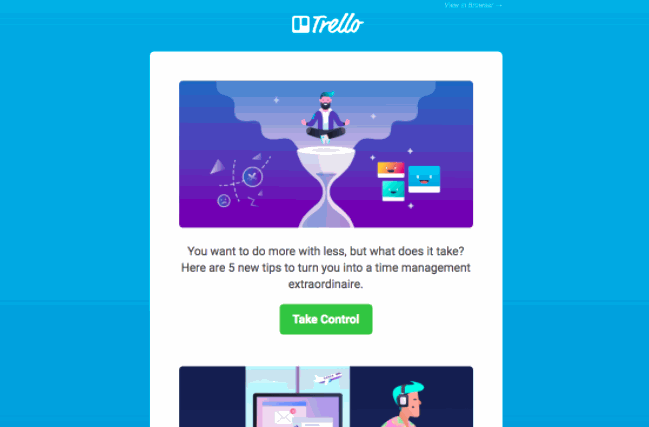
(Source: Trello)
How Does Social Media Engagement Generate Qualified Leads?
Social media platforms prove valuable for lead nurturing when you provide genuine value through useful content, thoughtful comments, and industry expertise. This approach builds authority in your field and increases brand awareness without appearing overly promotional to website visitors.
Social media engagement adds a personal touch compared to email since people see the person or organization in a more authentic light. This approach succeeds because it doesn’t feel like traditional sales pitches but rather constructive dialogue and relationship building with potential leads.
Neil Patel successfully uses social media to acquire more leads by posting regularly and commenting on relevant, niche-specific topics. His marketing strategies include posting consistently, choosing current and relevant content, and using different formats like videos, polls, and long-form articles to attract audience attention from his target audience.
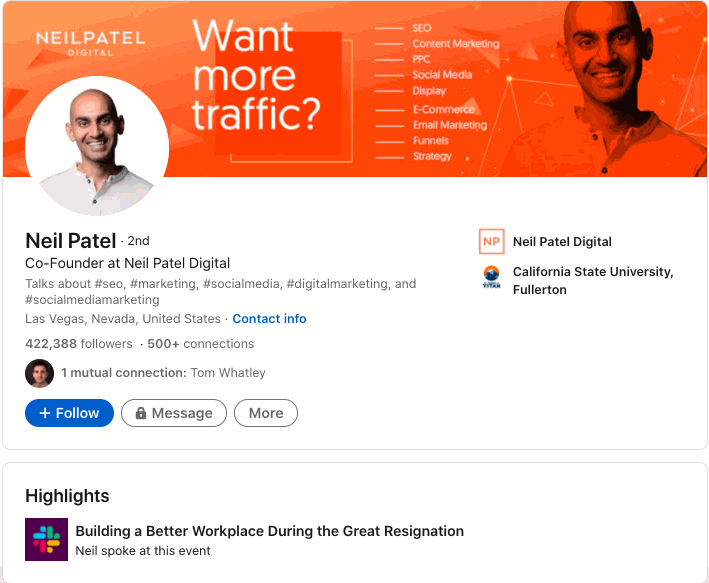
(Source: LinkedIn)
How Do Customer Referrals Create Warm Prospects?
Word of mouth remains one of the most effective ways to attract warm prospects. Referral programs often report approximately 70% higher conversion rates and 69% faster close times compared to other lead types (Influitive/Heinz rollups, summarized by Integrity Solutions/Exploding Topics).
Your existing customers are ideal lead generators because they understand your business operations, customer service quality, and what you can realistically deliver. They can share real life examples and serve as authentic advocates for your solutions to key stakeholders in their network.
Millennials, who hold significant purchasing power today, rely more on reviews and peer experiences than traditional advertising. This makes referral programs particularly effective for reaching decision-makers who value social proof over marketing messages when evaluating your product or service.
You can initiate referral programs that incentivize existing customers to recommend your business to their network. Dropbox operates a successful referral program where users who make referrals receive 500 MB of free storage space, turning satisfied customers into repeat customers who also generate new leads.
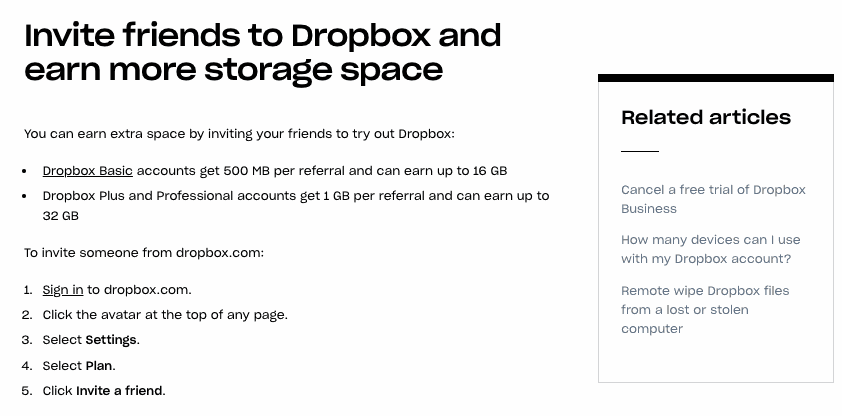
(Source: dropbox.com)
How Do Educational Webinars Attract Interested Prospects?
Webinars generate warm leads by providing valuable education that helps potential customers solve problems or learn about industry topics. The key is choosing topics that attract people who will likely need your services later in their buyer journey.
Through webinars, you can offer additional free resources like e-books, cheat sheets, or video lessons that help collect valuable contact details for future outreach through your marketing channels. This approach positions you as an industry expert while building a qualified prospect database.
Tailwind uses webinars to gather email addresses for lead generation purposes. Users must complete a short form to access their live webinar content, creating qualified leads who’ve shown interest by attending industry events.
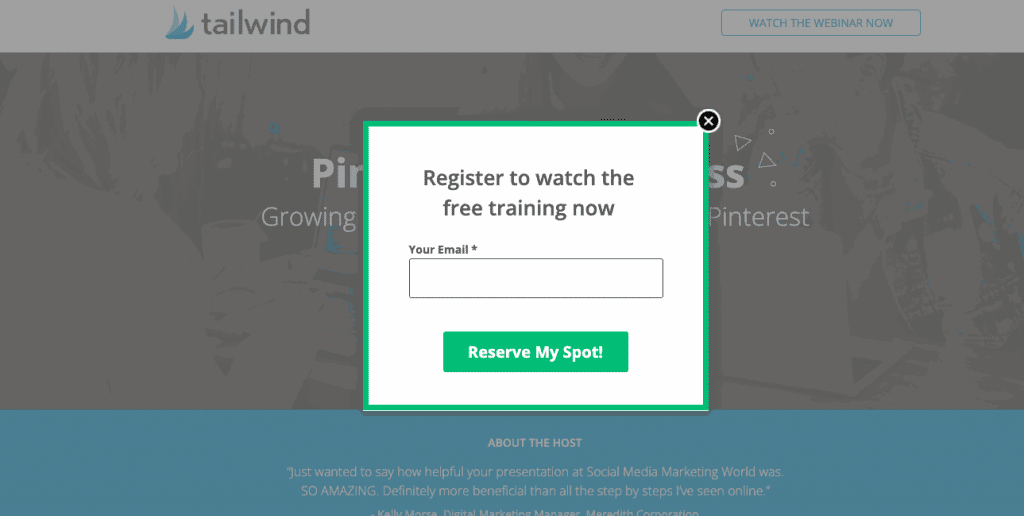
(Source: tailwind.com)
How Do PPC Ads Generate Targeted Leads?
Pay-per-click advertising helps generate leads by placing your message where your target audience spends time online. PPC ads in marketing campaigns allow precise audience targeting based on buying patterns, geographical location, industry, or even competitors they’re researching.
Create compelling landing pages with clear value propositions to secure higher conversion rates. Your landing page forms the first impression potential customers have of your brand, making design and messaging crucial for success in converting website visitors into qualified leads.
You can insert lead capture forms directly into ads, allowing prospective buyers to express interest without leaving the platform. For example, car insurance companies use PPC ads to offer free quotes, collecting email addresses for follow-up by sales professionals.
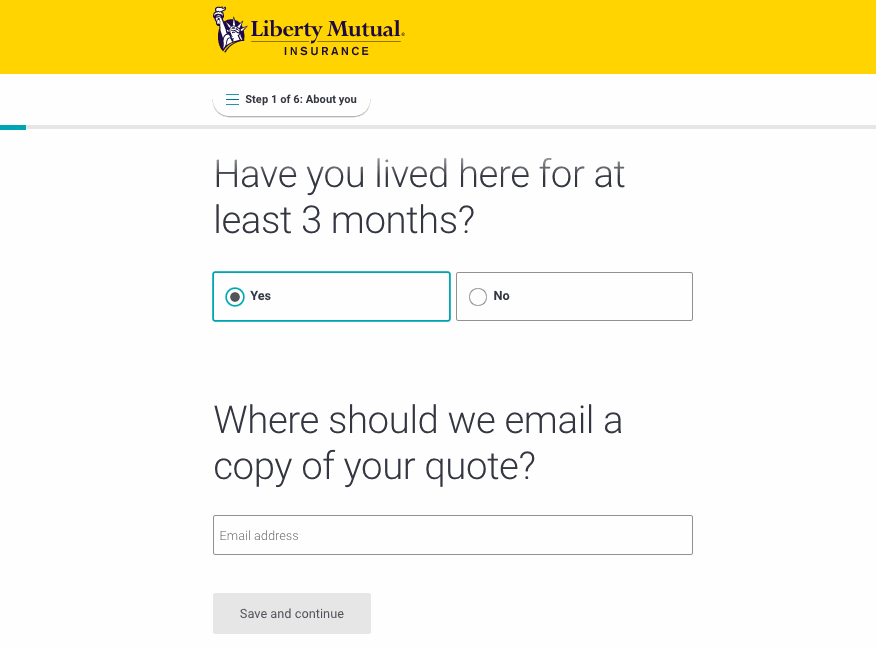
(Source: Google Search Results)
How Does Live Chat Help Capture Warm Leads?
Live chat options help gather interested prospects through proactive engagement and post-chat surveys. According to LiveChat’s 2024 Customer Service Report, which analyzed over 2 billion chats, businesses achieve an average customer satisfaction rate of 64.2% with live chat support from website visitors.
You can contact first-time website visitors with personalized greetings to extend their visit duration and gather insights about their needs. Use chat interactions to collect contact details for follow-up conversations and relationship building with potential leads.
Pre-chat surveys help collect valuable prospect information while improving customer service quality. When prospects spend time on your website and develop interest in your services, they often have questions they want to discuss before making decisions about your product or service.
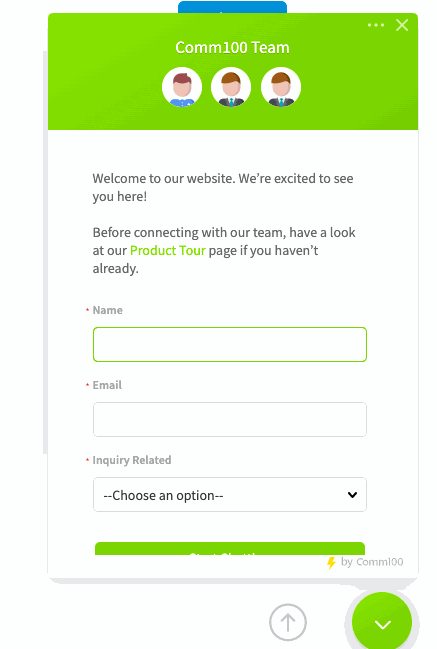
(Source: comm100.com)
How Does Blog Content Generate Qualified Leads?
Quality content creation remains one of the most effective marketing tactics for generating qualified leads. By sharing relevant, accurate, and informative valuable content, you educate your target audience, provide expert insights, and build industry reputation.
Attach downloadable free resources like cheat sheets, templates, or guides that require email addresses to access. This lead generation strategy helps collect contact details from prospects who are genuinely interested in your expertise area and have shown interest in solving their pain points.
ActiveCollab, a project management software company, invests heavily in blog content to acquire more leads. Their blog offers abundant downloadable materials that website visitors can access in exchange for email addresses, which the company uses for targeted marketing efforts.
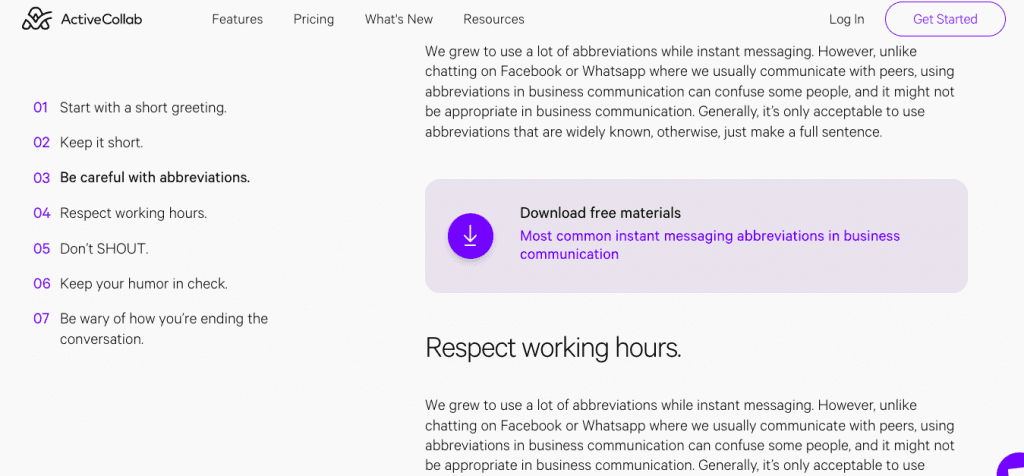
(Source: activecollab.com)
Warm Lead Cadence Template
Here’s a proven 4-touch cadence that respects prospect preferences while maximizing touchpoint effectiveness for warm leads who’ve shown interest:
- Day 1: Personalized email referencing their specific engagement
- Day 3: LinkedIn connection request with context
- Day 5: Follow-up email with additional valuable content
- Day 7: Phone call with voicemail referencing previous touches
Email remains highly scalable and is preferred by 80% of buyers for initial contact (RAIN Group; multiple 2025 roundups). This multi-channel approach ensures maximum reach while respecting buyer preferences throughout the sales process.
Frequently Asked Questions About Warm Leads
A warm lead is a potential customer who has already engaged with your brand through specific actions like content downloads, pricing page visits, webinars, or social media interactions. Unlike cold leads, warm leads are problem-aware and more receptive to personalized outreach.
Cold leads are problem-unaware with no prior engagement. Warm leads are solution-curious and have shown initial interest through content consumption or website visits. Hot leads are solution-ready prospects actively seeking to purchase, like demo requesters or pricing page visitors.
The most effective approach combines email, LinkedIn, and phone calls. Email is preferred by 80% of buyers for initial contact and highly scalable. A recommended sequence: Day 1 personalized email, Day 3 LinkedIn connection, Day 5 follow-up email, Day 7 phone call.
Leads are warmest in the first 5 minutes after inquiry (21× more likely to qualify vs 30 minutes). While initial receptiveness lasts only minutes, leads can stay warm for days or weeks with consistent nurturing. However, B2B data decays 2.1% monthly, requiring continuous list hygiene.
No, you cannot buy warm leads in the traditional sense, as they’ve shown interest in your specific company. However, intent data providers like UpLead, ZoomInfo, and Bombora can identify companies actively researching topics related to your solution—effectively ‘warm’ prospects.
Use targeted marketing campaigns with valuable content, create urgency with time-sensitive offers, highlight your competitive advantages, and maximize contact forms on your website. Consistent nurturing through email sequences and social media engagement gradually warms cold prospects over time.
How Do You Engage Cold Leads Effectively?
Here are proven marketing tactics to warm up cold leads and turn leads into qualified prospects:
Send relevant, personalized messages.
Custom messages show potential customers you’re paying attention to their company and investing time to understand their specific needs and pain points. This approach requires patience and effort, but typically generates higher more engagement than generic outreach to prospective buyers.
Time your outreach strategically.
Timing significantly impacts email performance. Emails sent on Mondays often remain unopened because prospects are busy with work that accumulated over the weekend. Thursday mornings typically provide optimal response rates for B2B outreach to potential leads.
Diversify your communication marketing channels.
If potential customers aren’t responding to email, try reaching them through other marketing channels. Leverage social media platforms, targeted advertising, and industry events to specifically target your target audience and promote your services in different contexts to generate more leads.
Conclusion
Not all sales leads are created equal. Warm leads represent your highest-probability prospects because they’ve already shown interest in your solution category through their engagement with your marketing materials. By focusing your sales efforts on these qualified leads, you can dramatically improve conversion rates while reducing the time and resources spent on unproductive cold outreach.
The key is implementing a systematic lead generation strategy: identify warm leads through behavioral signals and lead scoring, generate leads on demand using tools like UpLead’s intent data and technographics, nurture them with valuable content and personalized outreach through multiple marketing channels, and measure success through conversion rates and velocity metrics.
Remember, nurtured leads make 47% larger purchases than non-nurtured leads (Annuitas; via HubSpot). The goal isn’t just to generate more leads—it’s to generate better qualified leads that convert into revenue. Start implementing these marketing strategies today, and you’ll see the difference that focusing on warm prospects makes for your sales results and overall business growth.


